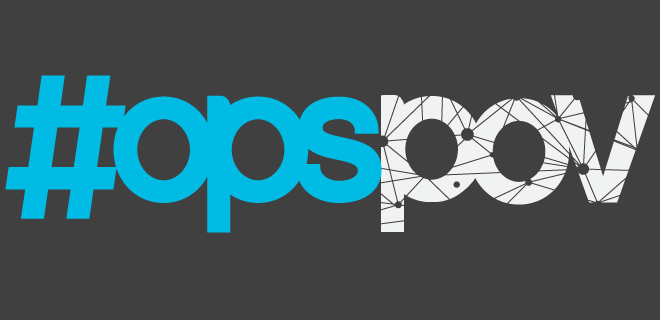
Earlier this year, Will Spann was volunteered as a speaker on a panel I was leading about HTML5 creative and responsive site issues. We had chatted before, but as we prepped for the discussion and he described the Creative Lab at The Weather Company, I was blown away.
Publisher creative offerings have been high on my mind for the last few years, and the rise of the Weather Creative Labits meager beginnings to central monetization role stood out as quite the achievement. At the time I said, we must do something bigger with this – we must tell more people! Fortunately, the stars have aligned for the August Publisher Forum in Charleston, SC – in a session titled, “Getting In Touch With Your Creative Side,” Will will not only describe the evolution of his scrappy group, but also offer advice and best practices for publishers building up their own programs or studios.
Adobe Flash’s recent freefall, thanks to a ban by Mozilla Firefox and the upcoming Chrome Flash pause, has me pondering even more about publishers and creative. I’ve been watching the discussion, hearing that advertisers are asking that campaigns not be served to Firefox users while some pubs are contemplating rejecting Flash creative altogether.
The latest Flash debacle has opened a window into a bigger opportunity. Converting Flash display ads into HTML5 has become a lot easier thanks to tools like Google’s Swiffy. But still these display ads are, to use the language of the late Steve Jobs, likely to “suck.” It’s a shame when we’ve developed systems for transacting so efficiently – we can target second-party data (matched between advertiser and publisher) in a private exchange for inventory that’s dynamically allocated, but then the end user ends up looking at a piece of creative built with long outdated technology.
Part of the problem with lack of consumer engagement is bad units and placements, and the native revolution has gone a long way here. Doing native well doesn’t mean attempting to fool the user into clicking on something he/she thinks is content, but presenting smarter advertising in a unit that will actually draw attention. OpenRTB 2.3’s embrace of native programmatic – programmatically transacted units that adjust to seamlessly fit into publisher’s in-feed placements – is a giant leap, particularly for standard units and RTB-powered transactions.
Yet creative still remains a problem. I remember a pub once telling me that a loyal advertiser suddenly decided to cut its spend. When the publisher people asked why, the advertiser replied that its on-site display advertising was ineffective. The pub commented back that the advertiser had been using the exact same creative for years. YEARS.
It leaves the pub in an interesting boat: theoretically creative should be the advertiser’s issue, but if they’re withholding spend because the creative is weak, I guess the pub is going to have to roll up their creative sleeves. It’s not like this is unprecedented – in the dark ages of digital advertising (well, we may still be in the dark ages, so let’s just say last century), running advertising could include building the creative as well as hard coding it into the site.
Now tech providers are buffering publishers in their creative elements. For example, Jetpack offers a creative studio to help pubs quickly build exciting rich media creative in HTML5, but it also recently rolled out Workshop for developers. Now in beta is a toolkit specifically for designers.
Workshop is an HTML5 toolkit for building creative, complete with templates; as I learned in researching just how Flash had managed to stay alive all these years, toolkits and libraries for HTML5 were in short supply, so people building creative went with what they knew. (Additional reasons, including programmatic platform file size limits, are detailed here.) In addition, Jetpack offers rich media serving, macro-enabled tags and integrations into most third-party supply-side ad servers.
Why on earth is this service is aimed at publishers? Because Jetpack co-founders Marc Brown, Chris Tragos and Kevin Woolery saw publishers’ creative opportunity when they worked at BUZZMEDIA (now known as Spin Media) before launching the company in 2009. The existing (many still-existing) rich media services were almost completely advertiser focused and lagged when it came to creative turnaround. Besides, who knows their site and their audience better than the publishers themselves? Who should know the best way to engage users as well as make it a technical reality?
Weather’s Creative Lab is quite impressive, but it’s part of a very a big company with resources not every media company has on call. Tools like Jetpack level the playing field, giving publishers of all sizes the ability to build striking creative in-house. Tragos explained that their goal is to lower the burden of learning HTML5 by extracting the technical aspects and removing repetitive tasks.
And these ads are not just littered with crappy little animations that will make you fondly recall MySpace – they look good. When I hit the demo page, I realized a few of these campaigns had already grabbed my attention. They reminded me of when Vox Media presented some jaw-dropping creative that moved as you scrolled – a skier horizontally crossing your screen – at OPS Mobile in 2013. I thought then, “This is the future of creative.” I hope I’m right.
In the near future, all standard display units will be bought through programmatic channels. We’ve long said custom site integrations are where direct sales will thrive and pubs will distinguish themselves, but noted that these are difficult to scale. Well, easy-to-use HTML5 toolkits might be the solution to scaling and supercharging the growing field of publishers creative efforts.
And then how will that shake up the relationships between pubs, media agencies, creative agencies and even brands themselves?